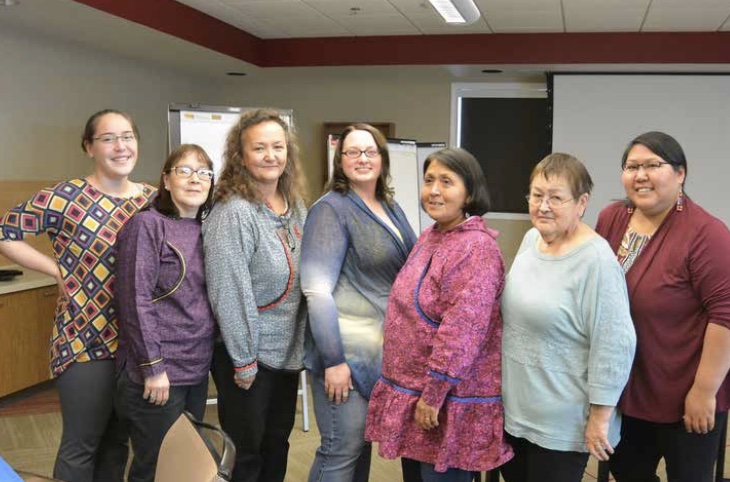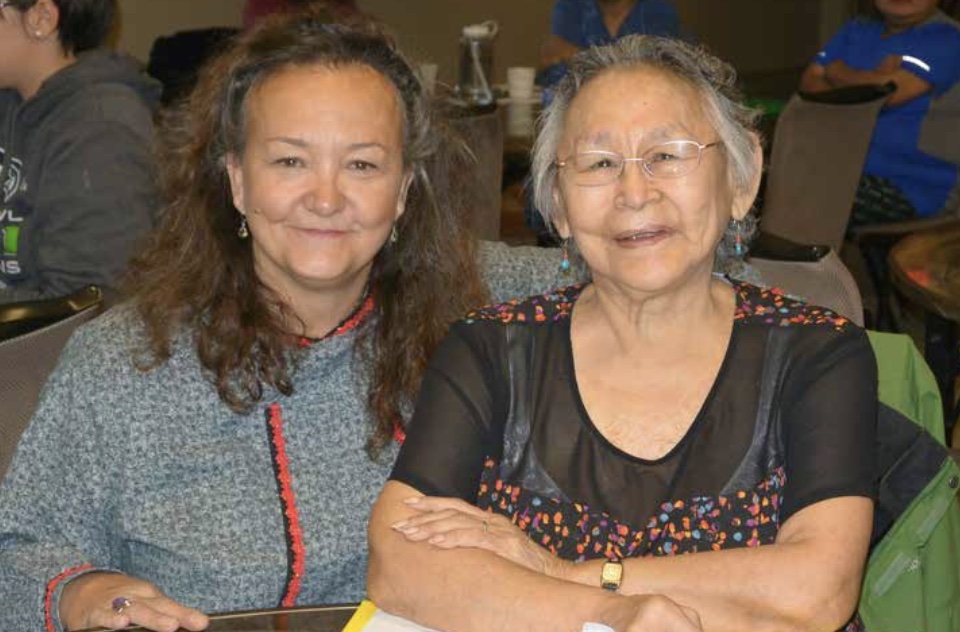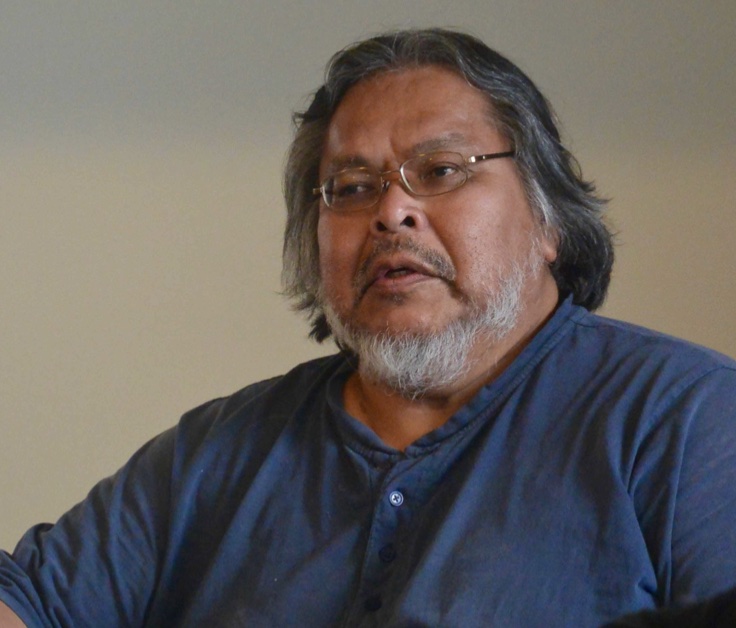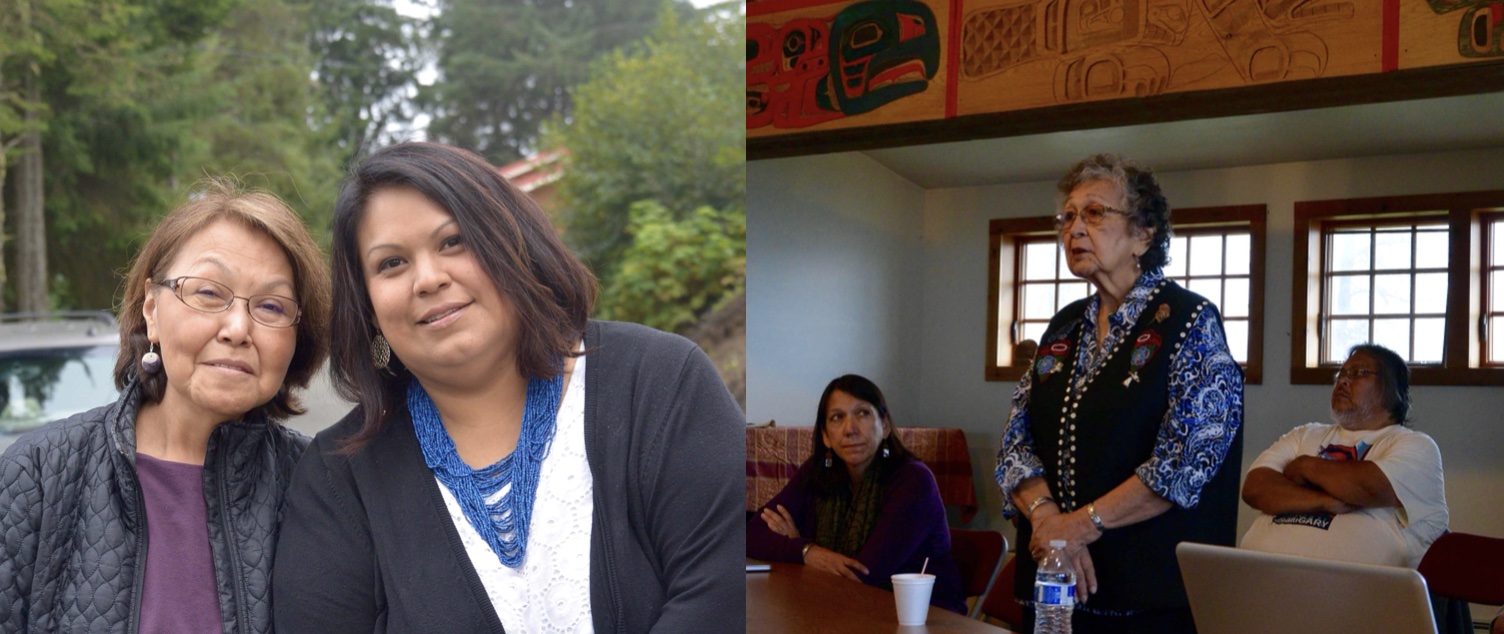Indigenous Organizing Approaches Addressing the Safety of Alaska Native Women

In 2011, the National Indigenous Women’s Resource Center (NIWRC) joined in partnership with a group of long-time village-based Alaska Native advocates to address the unique challenges Alaska tribes face in responding to violence against women. Two years later, in October 2013, a technical assistance grant from the Office on Violence Against Women was awarded to NIWRC to assist in the development of the Alaska Native Women’s Resource Center (AKNWRC) and provide technical assistance and training to meet the unique needs of Alaska Native tribal governments addressing violence against women. The partnership focused on the development of an indigenous village- based curriculum.
“The subject is very sacred, because it addresses the heart of who we are, our religion. We have our way of living as Tlingit peoples. Being required to develop Tlingit responses that are mirrored on state and federal responses is unrealistic because of the cost and because state and federal responses are not based on the world view of the Tlingits,” said Mike Jackson, respected elder and retired Alaska State Magistrate Judge.
“Our women carry the clan and it is important that we restore our cultural values so that our mothers, daughters, granddaughters, and sisters are healed and protected from violence. This is how the government can assist the village governments.”
—Joyce Skaflestad, Advocate, Hoonah Indian Association and retired Alaska State Magistrate.
Voices, Teachings, and Languages

The curriculum was developed in partnership with a working committee and the four Alaska Native villages of Emmonak, Kotzebue, Anvik, and the Organized Village of Kake. The curriculum comprises three core components of the voices, teachings, and languages of the specific indigenous people of these villages: Yup’ik, Inupiaq, Tlingit, and Athabascan. “The ‘voices’ are the experiences of our women and survivors. The ‘teachings’ are our cultural way of life based on respect and often carried on by our elders,” said Lynn Hootch, Executive Director, Yup’ik Women’s Coalition. “Our ‘languages’ are words expressing how we think, our values, relationships to each other and the world, who we are as a people.”
The curriculum was piloted in these villages in 2015 and 2016 and organized as “community engagement” sessions. In September, the AKNWRC completed Year-2 follow-up sessions in the Village of Kotzebue for the Inupiaq Region and for the Tlingit Organized Village of Kake. Local planning committees are currently organizing Year-2 community engagement sessions
in the Native villages of Emmonak for the 18 Yup’ik villages in the region in October, and Anvik for the 4 Athabascan villages in the region this November.
 Organizing to Increase Safety
Organizing to Increase Safety
The primary purpose of the village engagement sessions are to organize a village-based response and facilitate ownership of the response by the community. This approach acknowledges the village authority as sovereigns that have the responsibility and the right through self-government to protect women. It is also based on the reality that the state and federal governments have not ensured the safety of Alaska Native women and by this lack of response over decades have created circumstances that have increased the vulnerability of women to predators.
"After decades of training, we understand domestic violence. These trainings, and other curricula, rarely recognize the authority, responsibility, and the right of villages to protect women,” said Tami Truett Jerue, Executive Director, AKNWRC. “At the village level, we must address these issues because for most villages we are the only ones standing between a woman, or girl, and violence.”
Organizing to acknowledge these disparities and create protections for women, increase the response of the village, and hold abusers accountable are the three focuses of the engagement sessions. The engagement sessions also are based on the reality that many villages, while lacking the resources to fully develop western justice systems, do have village traditional justice approaches that can be strengthened or reestablished to create protections for women in the village.
“Our children often are the first responders in many villages. We need to acknowledge this for change to happen.”
—Shirley Moses, Director, Healing Native Hearts Coalition.
“I have been at many trainings regarding the wellness of our people, addressing domestic violence and other matters. A highlight of the last two days is the understanding the only way to change things is to do it ourselves. We have to make the change. It’s not going to come from anyone else.”—Joel Jackson, Vice President for the Organized Village of Kake.

Engagements Sessions Scheduled for New Regions
AKNWRC will work in partnership with two additional villages to organize community engagement sessions for the Spring of 2018 using the AKNWRC curriculum. The first is the Yup’ik village of Akiak located 42 air miles from the Bethel hub. The second session is with the Village of Hydaburg/Prince of Wales Island to engage in discussion on the development of local responses to violence against women.

Right: September 18, 2017, Organized Village of Kake (OVK)—Elder Ruth Demmert (standing) opens the OVK Community Engagement. Also pictured Michelle Demmert, Tlingit Haida Chief Justice (left); Joel Jackson, Vice President, OVK.





